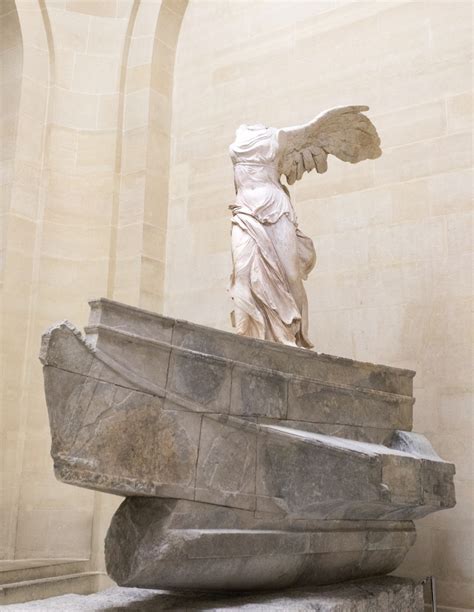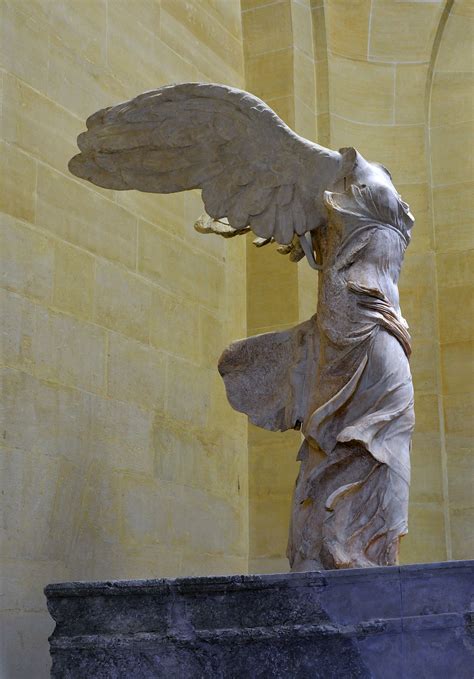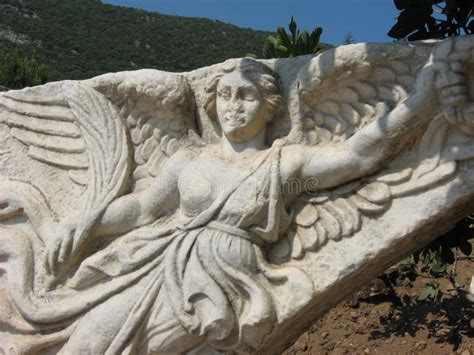de god nike beeld | Winged Victory: the Nike of Samothrace de god nike beeld One of the most celebrated works of Hellenistic art is without doubt the Nike of Samothrace, on display at the Louvre since 1884 CE. The white . Volume 90% 00:00. 03:57. Defeats Of My Favorite Movie Villains Part I. Topics. villains, movie. Villains Quotes: "There shall never be another dawn!" -Lord of Darkness. "Let's agree to disagree." -Boris the Animal. "Tell me something, my friend. You ever dance with the devil in the pale moonlight?" -The Joker. "Jesus. had days like this."
0 · Winged Victory: the Nike of Samothrace
1 · Winged Victory of Samothrace
2 · Nikè, de godin van de overwinning
3 · Nikè van Samothrake
4 · Nikè
5 · Nike of Paionios
6 · Nike (mythology)
7 · Myths, Symbols and Facts about Nike – the Greek
8 · Die verhaal van Nike, die Griekse godin van oorwinning
9 · (PDF) Nikè: een beeldige godin
The charge DC-LV-IMEG-CUSTOMER-FORT-HOOD-TX has been reported as unauthorized by 0 users, and 0 users recognized the charge as safe. SAFE +0. SUSPICIOUS -0. Identify the DC-LV-IMEG-CUSTOMER-FORT-HOOD-TX charge and learn why it appears on your credit card statement. No worries! Read all this .
Nikè of Nike (Oudgrieks: Νίκη, Níkê) was de godin van de overwinning in de Griekse mythologie. Haar Romeinse equivalent is Victoria. De oorspronkelijke betekenis van Nikè is waarschijnlijk de bliksem. Daarom is zij onafscheidelijk verbonden met Zeus.

De Nikè van Samothrake (Oudgrieks Νίκη τῆς Σαμοθράκης / Níkê tês Samothrákês) is een hellenistisch marmeren beeld dat de godin van de overwinning Nikè voorstelt. De beeldhouwer is niet met zekerheid bekend. De stijl is die van de School van Rodos en men vermoedt dat het standbeeld werd gemaakt door de beeldhou. One of the most celebrated works of Hellenistic art is without doubt the Nike of Samothrace, on display at the Louvre since 1884 CE. The white .
The Nike of Paionios is an ancient statue of the Greek goddess of victory, Nike, made by sculptor Paionios (Paeonius of Mende) between 425 BC and 420 BC. Made of Parian marble, the medium gives the statue a translucent and pure white look to it. Found in pieces, the statue was restored from many fragments but is lacking face, neck, forearms, part of left leg, toes, and some fragments .
The statue, in white Parian marble, depicts a winged woman, the goddess of Victory (Niké), alighting on the bow of a warship. The Nike is dressed in a long tunic (χιτών, chitôn) in a very fine fabric, with a folded flap and belted under . De godin Nikè staat in de Griekse mythologie symbool voor ‘de overwinning’. Zij . Een van hulle, Nike wat haar sandaal aanpas, bekend as "The Sandal Binder", .
Tijdschrift van de Alumni Letteren Leuven, 4, april 2014, p. 163-164. Beschrijving van het . These are the key myths and facts about the goddess Nike - an ancient Greek deity of victory. She was primarily in charge of heaping praise and adulation on the victors in a battle or a competition.In Greek mythology and ancient religion, Nike (English: / ˈ n aɪ k i / ⓘ; [2] Ancient Greek: Νίκη, romanized: Nike, lit. 'victory'; Ancient Greek pronunciation: [nǐː.kɛː], modern:) is the goddess who personifies victory in any field including art, .
Nikè of Nike (Oudgrieks: Νίκη, Níkê) was de godin van de overwinning in de Griekse mythologie. Haar Romeinse equivalent is Victoria. De oorspronkelijke betekenis van Nikè is waarschijnlijk de bliksem. Daarom is zij onafscheidelijk verbonden met Zeus.De Nikè van Samothrake (Oudgrieks Νίκη τῆς Σαμοθράκης / Níkê tês Samothrákês) is een hellenistisch marmeren beeld dat de godin van de overwinning Nikè voorstelt. De beeldhouwer is niet met zekerheid bekend. One of the most celebrated works of Hellenistic art is without doubt the Nike of Samothrace, on display at the Louvre since 1884 CE. The white Parian marble statue represents the personification of winged victory. In a sense, the impact of the 2.75 m high statue is even greater now because the head and both arms of the goddess are missing.The Nike of Paionios is an ancient statue of the Greek goddess of victory, Nike, made by sculptor Paionios (Paeonius of Mende) between 425 BC and 420 BC. Made of Parian marble , the medium gives the statue a translucent and pure white look to it.
The statue, in white Parian marble, depicts a winged woman, the goddess of Victory (Niké), alighting on the bow of a warship. The Nike is dressed in a long tunic (χιτών, chitôn) in a very fine fabric, with a folded flap and belted under the chest. It was attached to the shoulders by two thin straps (the restoration is not accurate). De godin Nikè staat in de Griekse mythologie symbool voor ‘de overwinning’. Zij werd doorgaans uitgebeeld als een jonge gevleugelde vrouw. De Romeinen noemden haar Victoria.
Winged Victory: the Nike of Samothrace
Een van hulle, Nike wat haar sandaal aanpas, bekend as "The Sandal Binder", beeld die godin uit wat in figuur-onthullende nat materiaal gedrapeer is. Dit word beskou as een van die mees erotiese uitsnywerk op die Akropolis.Tijdschrift van de Alumni Letteren Leuven, 4, april 2014, p. 163-164. Beschrijving van het beeldhouwwerk Nikè in de Theologie bibliotheek van de KU Leuven. Jeroen Reyniers, ‘Nikè’, in: Leuven gebeiteld, Uit het Erasmushuis. These are the key myths and facts about the goddess Nike - an ancient Greek deity of victory. She was primarily in charge of heaping praise and adulation on the victors in a battle or a competition.In Greek mythology and ancient religion, Nike (English: / ˈ n aɪ k i / ⓘ; [2] Ancient Greek: Νίκη, romanized: Nike, lit. 'victory'; Ancient Greek pronunciation: [nǐː.kɛː], modern:) is the goddess who personifies victory in any field including art, music, war, and athletics. [3]
gucci crystal gladiator sandals
Nikè of Nike (Oudgrieks: Νίκη, Níkê) was de godin van de overwinning in de Griekse mythologie. Haar Romeinse equivalent is Victoria. De oorspronkelijke betekenis van Nikè is waarschijnlijk de bliksem. Daarom is zij onafscheidelijk verbonden met Zeus.De Nikè van Samothrake (Oudgrieks Νίκη τῆς Σαμοθράκης / Níkê tês Samothrákês) is een hellenistisch marmeren beeld dat de godin van de overwinning Nikè voorstelt. De beeldhouwer is niet met zekerheid bekend.
One of the most celebrated works of Hellenistic art is without doubt the Nike of Samothrace, on display at the Louvre since 1884 CE. The white Parian marble statue represents the personification of winged victory. In a sense, the impact of the 2.75 m high statue is even greater now because the head and both arms of the goddess are missing.
gucci platform horsebit sandal
Winged Victory of Samothrace
The Nike of Paionios is an ancient statue of the Greek goddess of victory, Nike, made by sculptor Paionios (Paeonius of Mende) between 425 BC and 420 BC. Made of Parian marble , the medium gives the statue a translucent and pure white look to it.The statue, in white Parian marble, depicts a winged woman, the goddess of Victory (Niké), alighting on the bow of a warship. The Nike is dressed in a long tunic (χιτών, chitôn) in a very fine fabric, with a folded flap and belted under the chest. It was attached to the shoulders by two thin straps (the restoration is not accurate). De godin Nikè staat in de Griekse mythologie symbool voor ‘de overwinning’. Zij werd doorgaans uitgebeeld als een jonge gevleugelde vrouw. De Romeinen noemden haar Victoria.

Een van hulle, Nike wat haar sandaal aanpas, bekend as "The Sandal Binder", beeld die godin uit wat in figuur-onthullende nat materiaal gedrapeer is. Dit word beskou as een van die mees erotiese uitsnywerk op die Akropolis.
Tijdschrift van de Alumni Letteren Leuven, 4, april 2014, p. 163-164. Beschrijving van het beeldhouwwerk Nikè in de Theologie bibliotheek van de KU Leuven. Jeroen Reyniers, ‘Nikè’, in: Leuven gebeiteld, Uit het Erasmushuis. These are the key myths and facts about the goddess Nike - an ancient Greek deity of victory. She was primarily in charge of heaping praise and adulation on the victors in a battle or a competition.
Nikè, de godin van de overwinning

Leveling. All of character's attributes increase by leveling to a certain degree. For Ki and Stamina this stops at level 50, as by then a character will have 5 bars by default, while other stats raise to the max level.
de god nike beeld|Winged Victory: the Nike of Samothrace


























